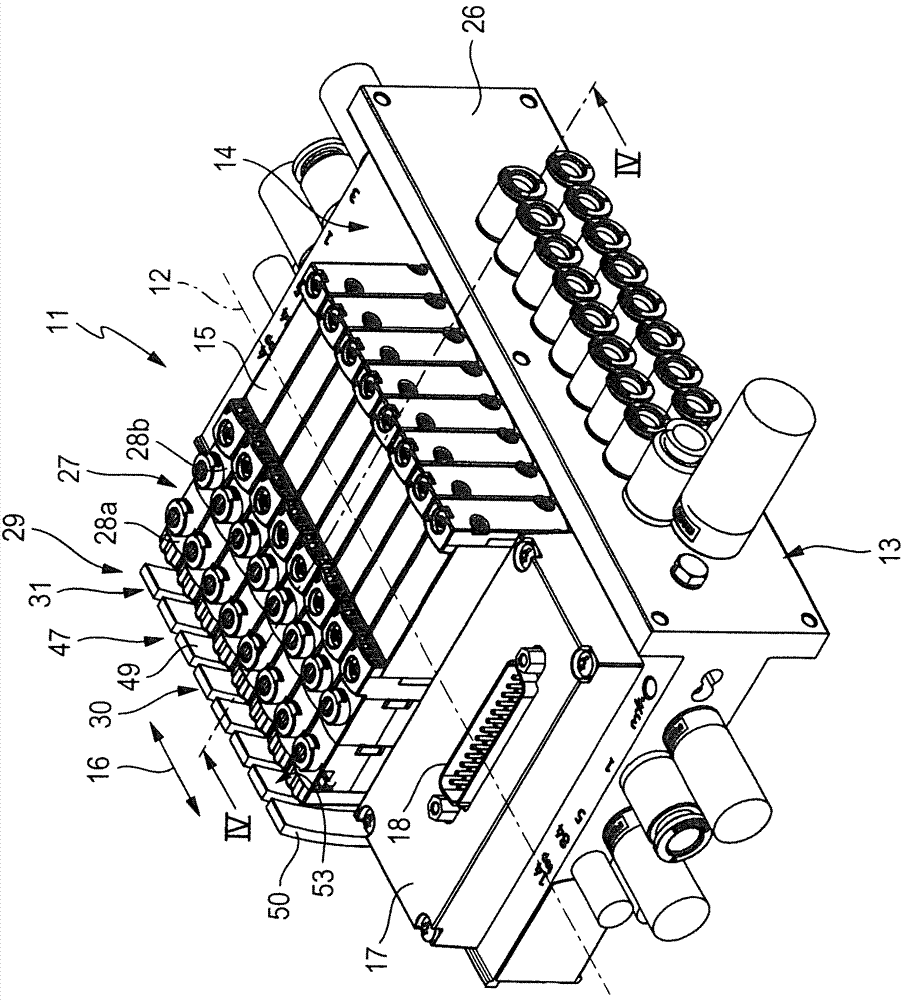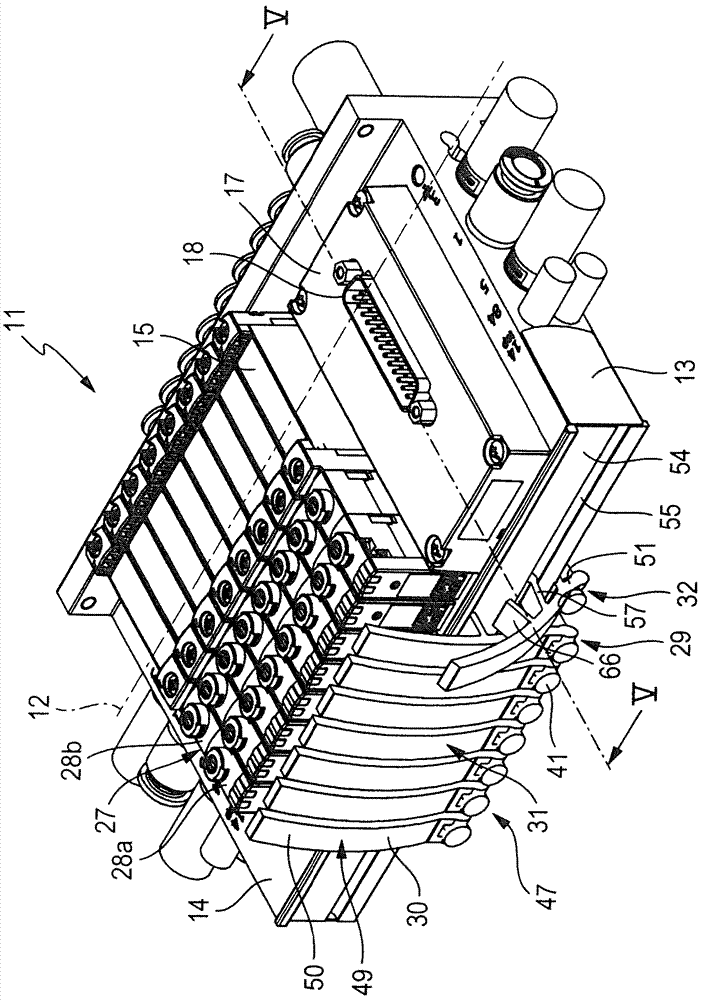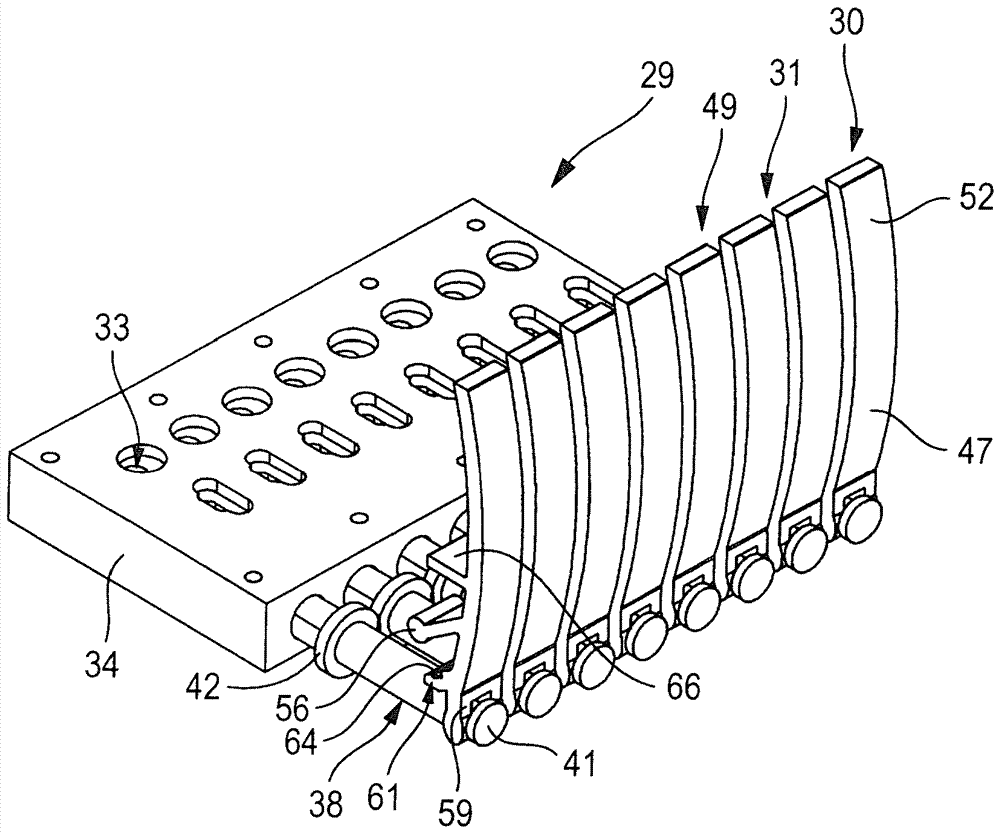Valve battery
A technology of batteries and safety valves, applied in valve details, valve devices, valve housing structures, etc., can solve the problem of no longer waiting
- Summary
- Abstract
- Description
- Claims
- Application Information
AI Technical Summary
Problems solved by technology
Method used
Image
Examples
Embodiment Construction
[0034]A preferred construction of the valve cell, indicated in its entirety by the reference numeral 11, comprises a fluid distributor 13 extending in the direction of the longitudinal axis 12, which is equipped with a plurality of in particular electrically actuatable controls on the first mounting surface 14. valve 15. The control valves 15 are arranged one behind the other in a serial direction 16 , indicated by the double arrows, which coincides with the longitudinal axis 12 . Likewise, the electronics module 17 is placed laterally on the first mounting surface 14 , for example beside the string of control valves 15 .
[0035] On its upper side, the electronics module 17 has an electrical connection 18 via which a control signal for controlling the valve 15 can be introduced. as especially in Figure 4 As shown in , the circuit board assembly 19 is located inside the fluid distributor 13 , which extends in the direction of the longitudinal axis 12 of the valve cell 11 . ...
PUM
 Login to View More
Login to View More Abstract
Description
Claims
Application Information
 Login to View More
Login to View More - R&D
- Intellectual Property
- Life Sciences
- Materials
- Tech Scout
- Unparalleled Data Quality
- Higher Quality Content
- 60% Fewer Hallucinations
Browse by: Latest US Patents, China's latest patents, Technical Efficacy Thesaurus, Application Domain, Technology Topic, Popular Technical Reports.
© 2025 PatSnap. All rights reserved.Legal|Privacy policy|Modern Slavery Act Transparency Statement|Sitemap|About US| Contact US: help@patsnap.com



